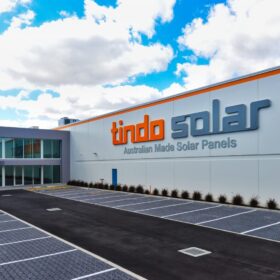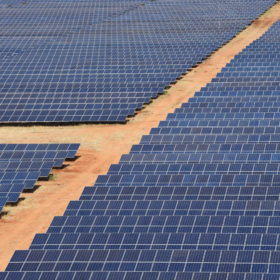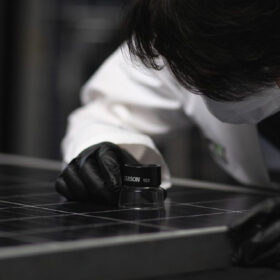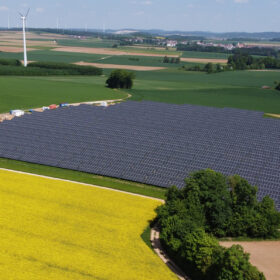Australian solar panel manufacturer unveils 1 GW expansion plan
Australian solar panel manufacturer Tindo Solar has announced plans to build the country’s first solar panel gigafactory as it looks to increase its manufacturing capacity to capitalize on a growing domestic market dominated by imports.
India’s NTPC wraps up 1.5 GW solar tender with $0.031/kWh tariff
Solarpack (Anboto Solar), Apraava Energy, Avaada and ReNew have emerged winners in NTPC’s latest 1.5 GW solar PV auction.
New solar tree design offers improved module cooling, lower shading losses
Researchers in Hungary have proposed to build photovoltaic trees with a significant distance between the solar panels. The proposed sunflower-shaped design reportedly reduces shading losses between the panels while improving cooling and heat dissipation.
Tesla releases API for solar, Powerwall systems, EV chargers
Tesla has released an application programming interface (API) to enable third-party developers to interact with its home energy products.
German startup Suena secures cash for its battery energy trading technolgy business
The Hamburg-based battery energy trading software and services company has raised €3 million ($3.27 million) seed funding to expand its software-driven trading services across Europe. The capital will be used to introduce its software, dubbed Autopilot, and its trading services to new European markets.
Weekend Read: Temper tantrum
Reports of broken module glass with no obvious cause have begun to crop up at large PV projects. Module design, glass manufacturing, and interactions in the field between modules and trackers are at play and a clear solution has yet to emerge. Early signs suggest an update to certification standards may be needed.
German grid operator expects new 2023 solar capacity to hit 14.1 GW
Germany’s Federal Network Agency (Bundesnetzagentur) says developers likely installed 14.1 GW of new solar capacity in 2023, with more than 260,000 balcony solar modules now in operation.
Meyer Burger unveils black HJT solar panels for balcony applications
Switzerland-based manufacturer Meyer Burger has developed black heterojunction (HJT) solar modules for balconies, featuring 800 W microinverters, smart control units, and mounting systems.
South Korean researchers develop 19%-efficient stretchable organic PV cells
The Korea Advanced Institute of Science and Technology (KAIST) says its new organic PV cells are suitable for wearable electronics. KAIST claims that the cells can be stretched by up to 40%.
Chinese PV Industry Brief: CHN Energy finalizes 10 GW inverter procurement
CHN Energy has wrapped up its 10 GW PV inverter tender for 2023, with Huawei securing orders for 4.1 GW of string inverters and Sungrow obtaining 1.85 GW.










